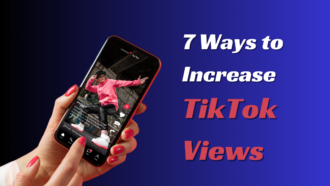Reach your Target Audience by Understanding Social Media Algorithms
Social media is so ingrained within our culture that it’s now a daily activity for most people. New platforms are also emerging to attract brands who want to reach new audiences. With so many users, there’s a strong need to create order and relevancy. Algorithms do just that, but how do you use them?
What are Social Media Algorithms?
Social media algorithms are complex mathematical formulas used by platforms like Facebook, Instagram, Twitter, and LinkedIn to determine the order and visibility of content in users’ feeds. These algorithms analyze various factors to personalize each user’s experience and deliver content that is most relevant and engaging to them.
Factors Influencing Social Media Algorithms:
- Relevance: Algorithms assess the relevance of content based on factors like user preferences, past behaviour, interests, and demographics. Content that aligns closely with a user’s interests is more likely to appear on their feed.
- Freshness: Social media platforms prioritize recent and timely content to ensure users are presented with the most up-to-date information and trends.
- Quality: Algorithms favour high-quality content, including visually appealing images, informative videos, and well-written captions. Posts that provide users with value are more likely to rank higher in their feeds.
- Consistency: Platforms reward accounts that consistently post relevant and engaging content, giving them higher visibility on users’ feeds.
Strategies for Leveraging Social Media Algorithms:
- Know Your Audience: Understanding your target audience’s preferences, interests, and behaviours is crucial for creating content that resonates with them. Conduct audience research and use analytics tools to gain insights into your followers’ demographics and engagement patterns.
- Create High-Quality Content: Focus on producing visually appealing, informative, and relevant content for your audience. Use high-resolution images, compelling captions, and engaging multimedia to capture users’ attention.
- Engage with Your Audience: Encourage interactions with your posts by asking questions, responding to comments, and fostering conversations. This will boost your content’s visibility and strengthen your relationship with your followers.
- Stay Consistent: Develop a consistent posting schedule to engage your audience and maintain visibility on their feeds.
- Monitor and Adapt: Track your performance metrics and monitor changes in social media algorithms. Adapt your content strategy accordingly to ensure that you always maximize your reach and engagement.
Why are Social Media Algorithms so Integral to Marketing?
The purpose of an algorithm is to filter out any content that might not be relevant or high quality. This puts your content at risk of being buried if it doesn’t fit the algorithm criteria. Plus, with Google introducing page experience as a ranking signal, it’s now more important than ever to ensure that your core web vitals are seen by the right people at the right time. Casinos are a prime example of overcoming the challenges presented by social media marketing algorithms.
A casino welcome offer will ideally be presented to people not signed up, but targeting this audience is difficult, as there’s simply no data available often. Players can be highly experienced gamblers, or they can be complete novices. One way to work around this would be to use audience segmentation. Casinos can market depending on player preferences by segmenting audiences, using interests and appeal to guide decisions rather than complex data.
Another example would be artists pushing new music tours. Algorithms can be used to determine who is likely to buy a ticket depending on the cities the band is visiting, whether or not they’d be willing to travel or use public, and the age and listening preferences of the audience. Businesses must first understand their audience to take full advantage of social media algorithms. They must go beyond data to explore personal preferences while building tailored campaigns with a high chance of success.
Challenges that Social Media Algorithms Pose for Marketers
Marketers face numerous challenges when developing campaigns. Facebook uses an algorithm that is different from Twitter’s, for example. Even though the target market is the same, a different message has to be sent. Facebook focuses on popularity, recency, relationships, and content type. Organic reach is also declining, with an average engagement rate of just 0.25%. This drops to 0.08% if you have 100k followers or more. Live video is also favoured by Facebook algorithm, making this a prime way to attract new users.
Conversely, YouTube has elementary ranking signals, including user interactions and the number of comments. YouTube recommendations are not based on how many followers a channel has. Instead, it’s a platform that loves good video content, so total watch time is a more critical factor. Creative and clever content will stand in terms of algorithmic exposure, regardless of your audience or target demographic. If you can embrace algorithms and note how they differ across platforms, you can create tailored campaigns that get seen by your user base.
Conclusion:
Understanding social media algorithms is essential for effectively reaching and engaging your target audience. By focusing on factors like user engagement, relevance, freshness, quality, and consistency, you can optimize your content strategy to align with the algorithms of various social media platforms. By creating high-quality content, engaging with your audience, and staying consistent, you can enhance your visibility and maximize your impact on social media. Keep monitoring and adapting your approach to stay ahead of the curve and continue reaching your target audience effectively.


















